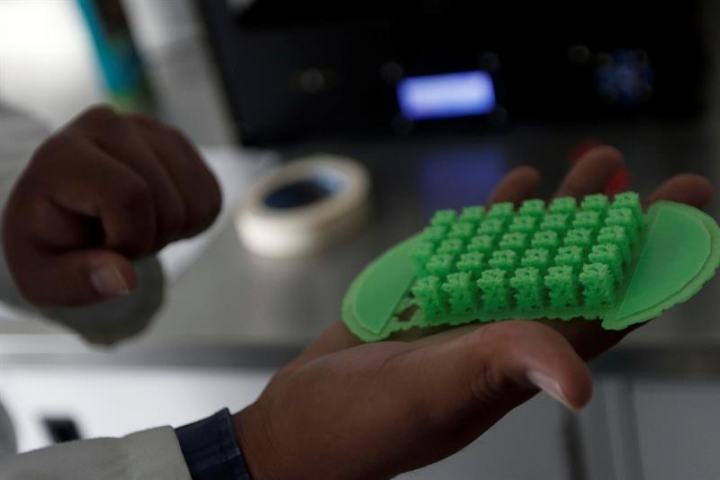Students from Benemérita Universidad Autónoma de Puebla (BUAP) in Puebla, Mexico have used a 3D printer to create scaffolds for synthetic bone material. The synthetic material promotes bone growth and the team used computer algorithms to develop the 3D printed scaffolds.
For the innovation, the group were awarded this year’s Javier Barros Sierra Prize by the Mexican Academy of Engineering and the Universidad Nacional Autónoma de México (UNAM).

28 days later
The synthetic material is housed within a 3D printed scaffold which, when implanted in the body, takes 28 days to be absorbed leaving regenerated bone. Working on the project Irving Fernandez Cervantes, who is a materials engineer at the Scientific Research Center in Yucatan (CICY), said
The best thing is that this material is designed using a mathematical model that represents how bone regenerates,
To develop the technique, the group used computer algorithms to determine how the bone would grow within the scaffold and have now successfully demonstrated the method in lab rats.

Future bone treatment
Importantly with such a method, it almost entirely eliminates the possibility of rejection since the synthetic materials can be based upon the patient’s own cells.
The developers envisage the technique could replace the use of metal implants – which have also been fabricated with 3D printing. Biologist Brenda Lizbeth Arroyo Reyes explains it could be used “if there is any kind of fracture, even a third-degree one, where the bone is compromised, instead of being replaced with some kind of metal that is no good after two years or has already rusted.”
Elsewhere in the field of synthetic bone regeneration, a British project aiming to create 3D printed bone implants for landmine victims has recently struck a breakthrough by implanting the technique successfully in a dog.
To stay up to date with all the latest 3D printing news, subscribe to the most widely read newsletter in the 3D printing industry, follow us on twitter and like us on Facebook.
Featured image shows biologist Brenda Lizbeth Arroyo with materials engineers Irving Fernandez and Patricia Victoria Perez in the laboratory. Photo via EFE.


